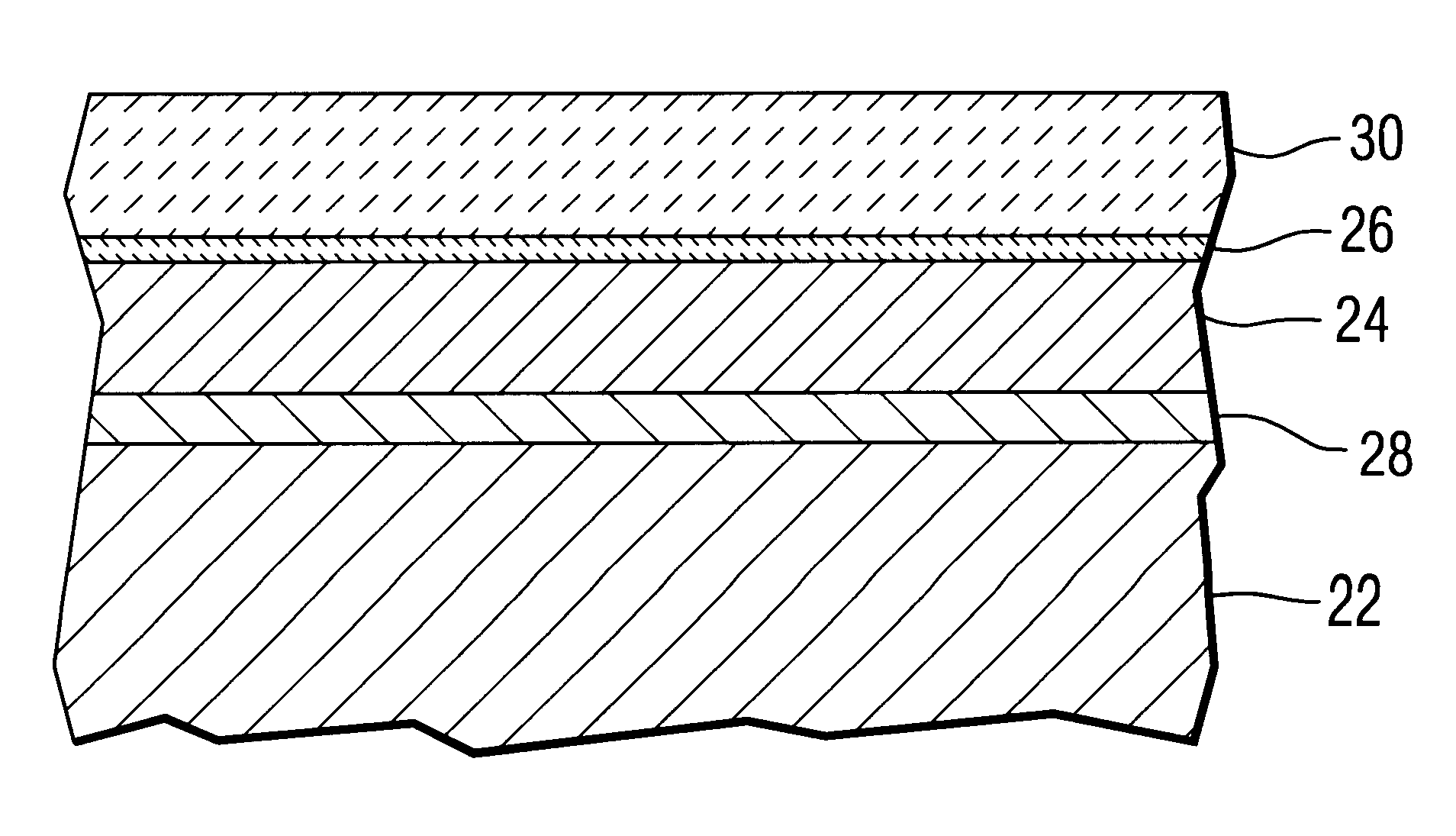Barrier layer for a MCrAlY basecoat superalloy combination
a barrier layer and superalloy technology, applied in the direction of superimposed coating process, transportation and packaging, coatings, etc., can solve the problems of reducing diffusivity, affecting the surface finish of the basecoat, so as to limit the coating life
- Summary
- Abstract
- Description
- Claims
- Application Information
AI Technical Summary
Benefits of technology
Problems solved by technology
Method used
Image
Examples
example 1
Several different diffusion barriers were fabricated utilizing diffusion barrier comprised of rhenium-nickel alloys by EB-PVD depositon of the diffusion barrier. Substrates of IN939 (22% Cr-19% Co-2% W-1% Cb-3.7% Ti-1.9% Al-1.4% Ta-0.15% C) were grit blasted to remove surface contaminants including dirt, grease, surface oxidation or other contaminants.
The grit media was subsequently washed from the surface using an organic solvent (methanol) prior to placing in an EB-PVD coating chamber. The substrate were preheated to 900.degree. C. prior to depositing either a 5 m or 10 m diffusion barrier coating deposition. An alloy of rhenium-nickel was deposited by co-evaporation of pure nickel and pure rhenium from two electron beam heated sources in vacuum. Depending on the electron beam intensity for each pool and the proximity of the substrate to each pool, it was possible to achieve barriers with rhenium contents from 5 to 70 wt % rhenium after the full coating cycle. In the preferred emb...
example 2
In another embodiment, the superalloy substrate was degreased using an organic solvent and polished prior to electron beam physical vapor deposition of a 5 m diffusion barrier. Subsequently, an MCrAlY is applied by low pressure plasma spray, diffusion heat treated at 1080.degree. C. for 4 hours, and TBC coated using air plasma spray.
example 3
In another embodiment, diffusion barriers from alloys comprised of tantalum and nickel were used. Superalloy substrates were grit blasted and washed to remove surface contaminant, preheated to 900.degree. C., and coated with 5 m of a tantalum-nickel diffusion barrier by co-deposition using electron beam physical vapor deposition. The tantalum concentrations can be varied by controlling the heating of the tantalum and nickel sources and by the location of the substrates within the coating chamber. In the preferred embodiment, the diffusion barrier is 60 to 90%. After applying the diffusion barrier, an MCrAlY basecoat was applied using low pressure plasma spray and the system was heat treated at 1080.degree. F. for four hours. A 7% yttria stabilized zirconia thermal barrier top coat was applied using air plasma spray.
PUM
| Property | Measurement | Unit |
|---|---|---|
| Length | aaaaa | aaaaa |
| Fraction | aaaaa | aaaaa |
| Fraction | aaaaa | aaaaa |
Abstract
Description
Claims
Application Information
 Login to View More
Login to View More - Generate Ideas
- Intellectual Property
- Life Sciences
- Materials
- Tech Scout
- Unparalleled Data Quality
- Higher Quality Content
- 60% Fewer Hallucinations
Browse by: Latest US Patents, China's latest patents, Technical Efficacy Thesaurus, Application Domain, Technology Topic, Popular Technical Reports.
© 2025 PatSnap. All rights reserved.Legal|Privacy policy|Modern Slavery Act Transparency Statement|Sitemap|About US| Contact US: help@patsnap.com


